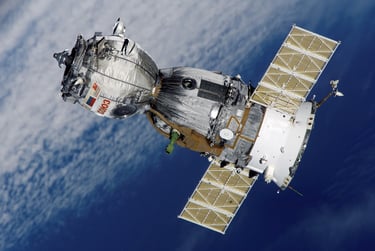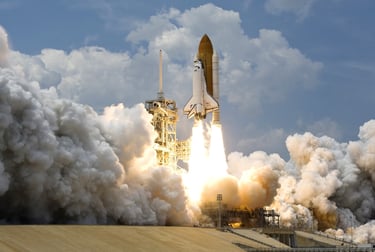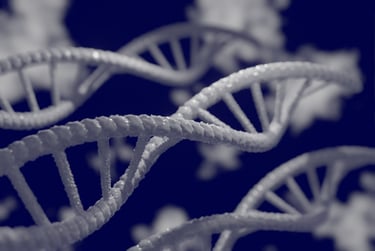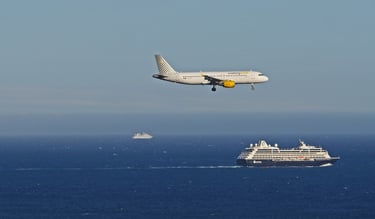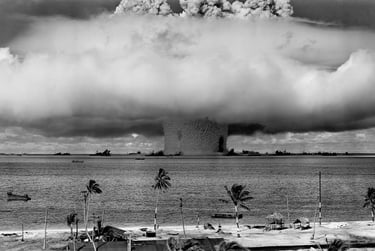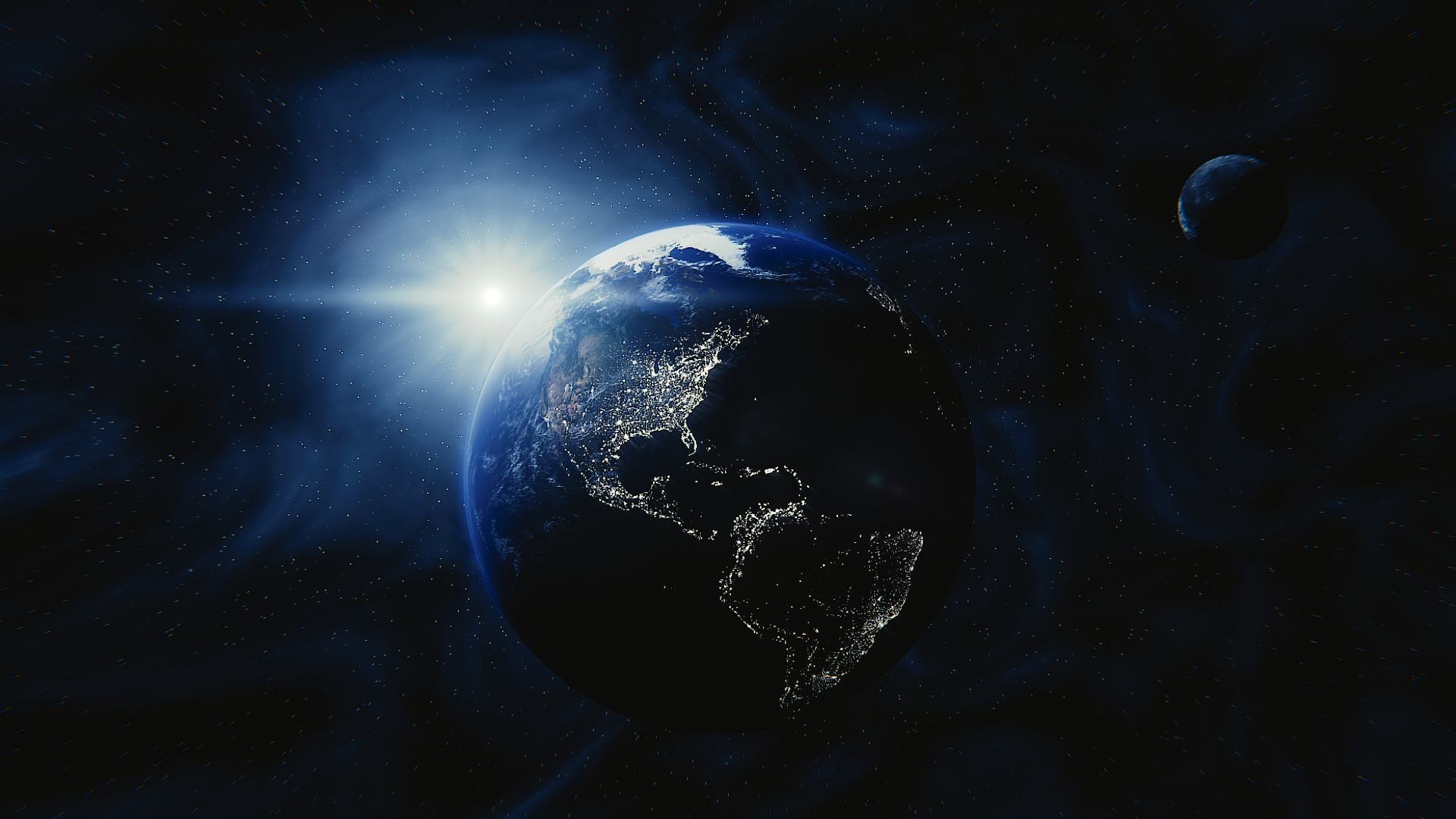
Articles on the Anthropocene
In-depth articles on the Anthropocene
What is the Anthropocene? - Part 2
The Anthropocene as our time and our space
In the first part of this article, I discussed the emergence of the Anthropocene in the Earth science community at the dawn of the 21st century and exposed the scientific debates this concept has generated. This second part deals with the broadest sense of the Anthropocene, which ended up escaping the scientific domain to spread in public opinion, in particular through the media coverage of two global and striking consequences of human activity: climate change and the collapse of "non-human" life forms.
Planet of the humans
The Anthropocene is a concept that speaks even outside the scientific community, because it sets a general framework that illuminates our vision of the world. It is the link between major current issues such as climate change, the extinction of life or the depletion of natural resources, which are indeed all linked to human activity and its expansion.
For some, in my opinion a minority, it allows to put a precise word on this feeling that we can experience more or less clearly, depending on the moment and the individual: the feeling that human civilization is everywhere, and that this omnipresence is oppressive as it leaves no escape.
For others, probably the majority, it is an invitation to see what is there before our eyes, but which we do not see: the hegemony of humans on the Earth's surface. "There's none so blind as those who will not see", says the proverb. Because we are born in the Anthropocene, we are so conditioned to the pervasiveness of human civilization that we no longer even perceive its totalitarian nature.
However, one only has to look around to see the staggering influence humans have on this planet. Human influence can directly and powerfully flood our senses, for example in the bustle of cities; it can take on "natural" aspects, as in these ultra-anthropized spaces that we call "countryside"; finally, it can be more insidious, via the presence of various chemical compounds emitted by human activity, even in spaces that we consider at first glance "virgin" of any anthropogenic influence, for example at the top of the highest mountains or at the poles.
Our world and our epoch
What the Anthropocene says is quite clear: wherever you are, you cannot escape human influence, which is everywhere and all the time.
We saw in the first part of this article that the detection of a distinctive sedimentary stratum on a large spatial scale is a necessary condition to formalize the Anthropocene as a new geological epoch. But do we need stratigraphic markers to acknowledge that we live in a totally "humanized" world?
Thus, taken out of the context of Earth sciences and its geological dimension, the Anthropocene simply designates our world: a world shaped by humans. Whoever you are, the Anthropocene inevitably interests you, because it is the time and the space in which you evolve. The Anthropocene is the world in which humans are everywhere and all the time; it is the time during which the Earth became the planet of the humans.
References
[1] H. Ritchie et al., « Population Growth », Our World in Data, 2023. https://ourworldindata.org/population-growth
[2] Y. M. Bar-On, R. Phillips, et R. Milo, « The biomass distribution on Earth », Proc. Natl. Acad. Sci., vol. 115, no 25, p. 6506‑6511, 2018. https://www.pnas.org/doi/full/10.1073/pnas.1711842115
[3] E. Elhacham, L. Ben-Uri, J. Grozovski, Y. M. Bar-On, et R. Milo, « Global human-made mass exceeds all living biomass », Nature, p. 1‑3, 2020. https://www.nature.com/articles/s41586-020-3010-5
[4] H. Ritchie, M. Roser, et P. Rosado, « Energy », Our World in Data, 2022. https://ourworldindata.org/energy
[5] J.-M. Jancovici, « À quand le pic de production mondial pour le pétrole ? », 2014. https://jancovici.com/transition-energetique/petrole/a-quand-le-pic-de-production-mondial-pour-le-petrole/
[6] H. Ritchie, M. Roser, et P. Rosado, « CO₂ and Greenhouse Gas Emissions », Our World in Data, 2020. https://ourworldindata.org/co2-and-greenhouse-gas-emissions
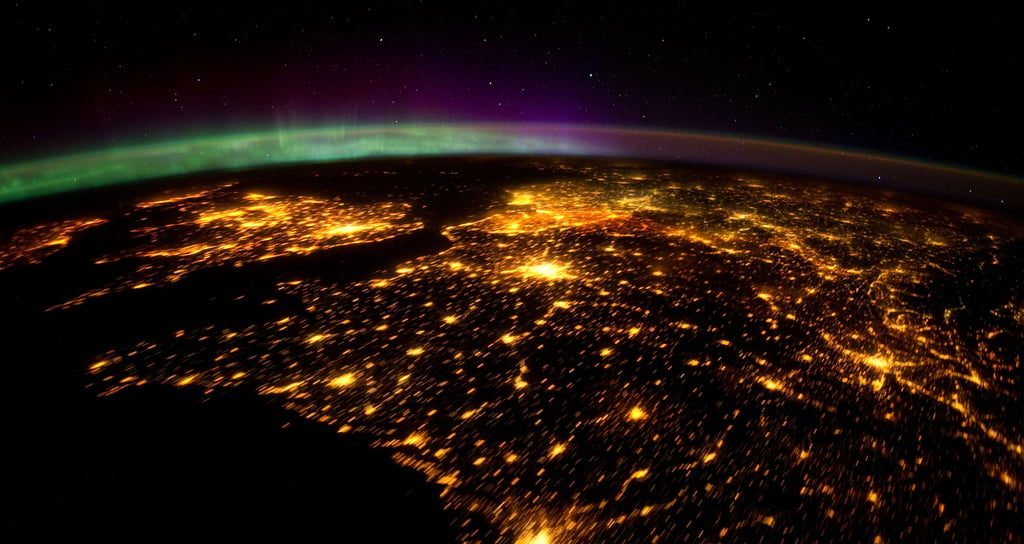

The time of omnipotence
In the collective imagination, the Anthropocene is also the time of omnipotence: if humans managed to "take possession" of the Earth's surface - at least are we convinced of it -, it is because they have acquired a huge power. A power whose effects are comparable to those generated by geological forces, seen for a long time as god overpowering manifestations!
This omnipotence is visible in several aspects, for example in human population increase, in the amount of goods produced, as well as in the flows of people, materials and data.
Regarding population size, the evolution started a few decades ago is striking. In two centuries, the number of humans has multiplied by 8! The Anthropocene is the space and the time on Earth occupied by 8 billion humans, while the human population has fluctuated for thousands of years between a few million and a few hundred million individuals [1].
The Anthropocene is also the moment when each person produces and consumes material goods (food, clothing, furniture, etc.) in quantities unachieved throughout all humanity history. Humans, 0.01% of the Earth's biomass [2], today produce "things" that weigh more than all the rest of living things put together [3] !
The Anthropocene is the world in which we have developed a globalized transport network, based on massive infrastructure and ingenious technologies. This network has developed flows, both of goods and people, in an extraordinary way. Many of us today have the possibility of traveling to the antipode in less than 24 hours. By contrast, with very few exceptions, humans have historically been forced to stay within a restricted perimeter for their entire life.
The Anthropocene is finally the world in which a human can at any time communicate with another human located at the other end of the planet. This unprecedented possibility is related to information and communication technologies, which have considerably multiplied our capicities for processing and exchanging data.
Generally speaking, human omnipotence is inseparable from scientific and technological development. The Anthropocene is the result of a world in which humans allocate a large part of their intelligence and energy into researching and manufacturing technologies capable of significantly and lastingly modifying life and the surface of this planet.
These spectacular technologies are notably those of genetic engineering, which make it possible to manipulate, decipher and modify the code of life. They are also those of computers or modern transport.
They are also and above all those of war, which is a fundamental component of human activity and which therefore constitutes a field in which the means allocated to research, innovation and development are colossal. Pesticides or the Internet are two technologies inherited from military research that have greatly increased the impact of humans on Earth's surface.
One emblematic military technology is, of course, the nuclear bomb, which plays an essential role in the process of evaluating the Anthropocene as a new geological epoch (see the part 1 of this article, in which I explain that the artificial radionuclides from nuclear weapons tests may constitute a stratigraphic marker of the Anthropocene). This technology is particularly significant, since it gives humans the power to destroy all life on Earth! A power which, if used, would be a particularly convincing (but stupid) proof of omnipotence...
Figure 1: Photo of Western Europe taken from the International Space Station. The emission of nocturnal lights gives a good idea of the human influence on the emerged lands. Image source: NASA.
The time of vulnerability
Paradoxically, the time of the impression of omnipotence could also be the time of the feeling of vulnerability. Because, in collective imagination, the Anthropocene is also the time of great threats.
First, while technologies do indeed confer great transformative power, they are also potentially devastating. The nuclear bomb is an obvious example of a technology posing a terrible threat. While it has been naively and stupidly sold as an unusable "weapon of deterrence", recent geopolitical events are dangerously changing this perception.
Next, it is increasingly accepted that human omnipotence is largely based, in addition to technologies, on the massive exploitation of "near-ideal" energy sources: fossil fuels, which precisely make it possible to animate the various technologies developed.
Petroleum in particular, by allowing the setting in motion of myriads of overpowered machines, has increased the power of transformation of humans a hundredfold and constitutes a primary engine for the growth of human activity and its power.
As a significant part of humanity have made the growth of production-consumption its ultimate goal, we always need more fossil fuels. In spite of the myth of the energy transition, we have never consumed as much fossil fuels as today! Oil, gas and coal still represent 80% of the global energy mix [4], while new energy sources (wind, solar, etc.) are being added to satisfy an insatiable appetite.
Despite their extraordinary practicality and efficiency, fossil resources have a first big flaw: they take millions of years to form, so that they are non-renewable on the time scale of human civilization. Their consumption therefore contributes to their depletion. The needs are increasingly difficult to meet and the peak of "conventional" oil would have already been exceeded several years ago [5]. In the absence of serious alternatives (as is the case today), a reduction in supply will lead to a steep decline in human omnipotence.
Fossil resources have a second major defect: their combustion amounts to releasing in the form of CO2 the carbon that they have held prisoner for millions of years in the bowels of the Earth. Thus, since 1850, human activity has released billions of tons of CO2 [6]. Since CO2 is a greenhouse gas, the sudden rise in its atmospheric concentration has resulted in an equally sudden rise in surface temperature [6]. Without reduction of emissions, human activity could, by the end of the century, drive the climate beyond the conditions experienced by humanity during its entire history!
In general, the growth of human activity is accompanied by an ever more ruthless exploitation of nature, an ever-increasing occupation of terrestrial space as well as the growing emission of waste. Ultimately, human omnipotence has an inglorious result that constitutes an existential threat: the alteration of the conditions conducive to life on Earth.
Conclusion
In its "general public" dimension, the Anthropocene therefore simply designates our world; a world in which humans are everywhere, all the time and have acquired an extraordinary power to transform the Earth's surface.
"With great power comes great responsibility," said the great philosopher Benjamin Franklin Parker (Spider Man's uncle). Humans have acquired a great power, but have they realized the responsibilities that this power implied?
Let me have serious doubts about it. The rapid depletion of natural resources, the collapse of life, climate change and more generally the alteration of living conditions are some strong signals of the fact that the feeling of omnipotence, and even more the impression to control events, are very dangerous illusions. Is the expression of omnipotence in the sense of an alteration of the conditions conducive to life (and therefore to one's own survival!) a sign of responsible and controlled ambition?
The Anthropocene is therefore above all the time when human activity upsets the precarious terrestrial balances, without the slightest awareness of the potentially disastrous and largely unpredictable consequences of these upheavals. More than the time of domination, the Anthropocene could therefore well be the time of an uncontrolled skid.
Henri Cuny
Figure 2: Science and technology are fundamentally linked to the transformative power of humans (and therefore to the advent of the Anthropocene) and largely contribute to the development of a shared feeling of omnipotence. Space, genetics, transport, digital or military technologies deeply permeate the collective imagination. Image source: Pixabay.
